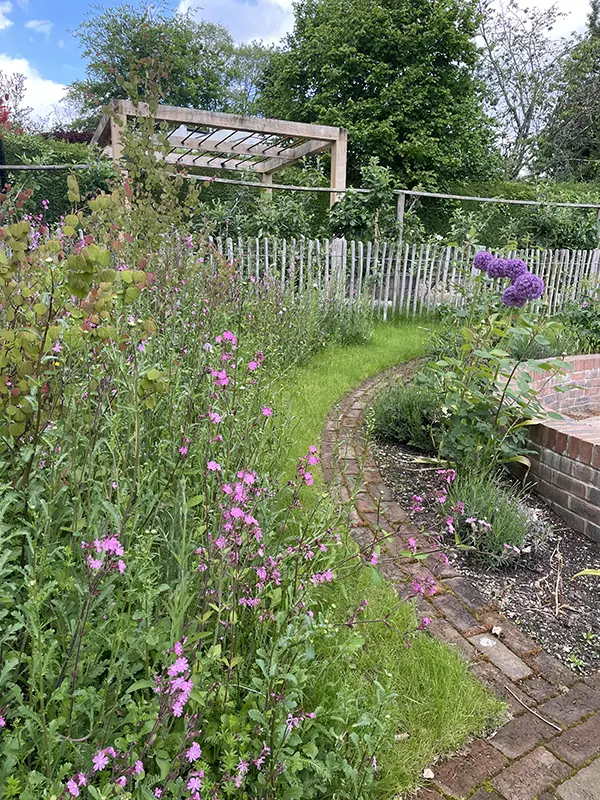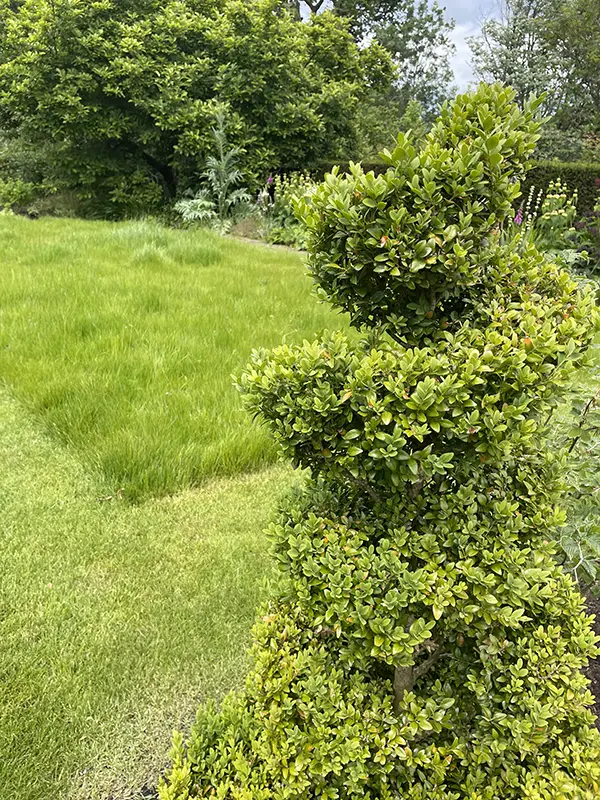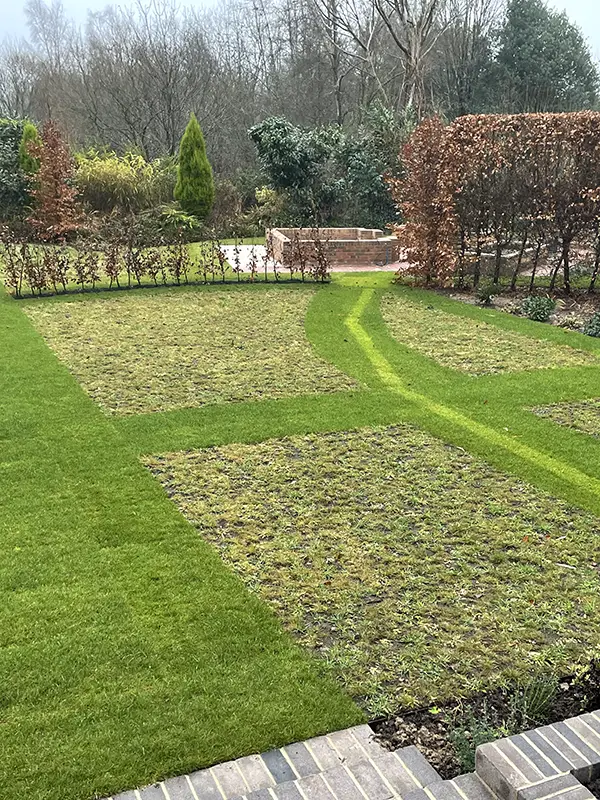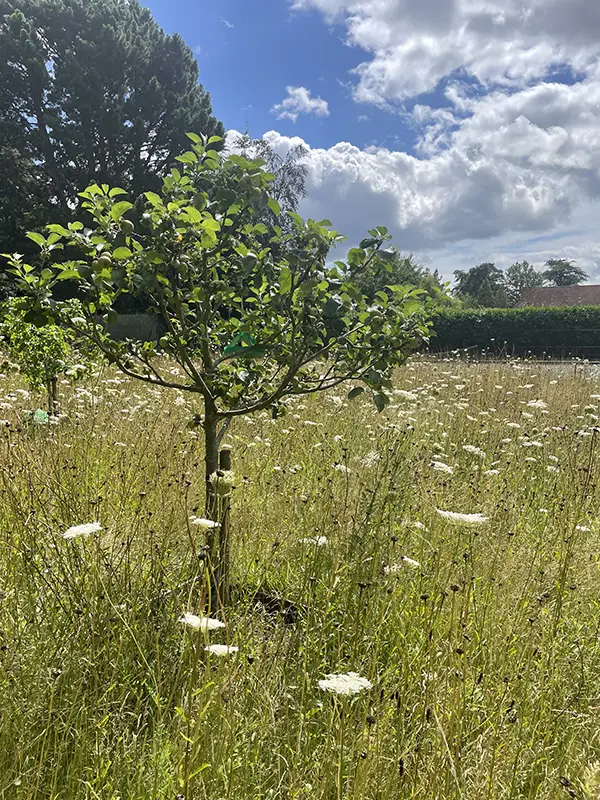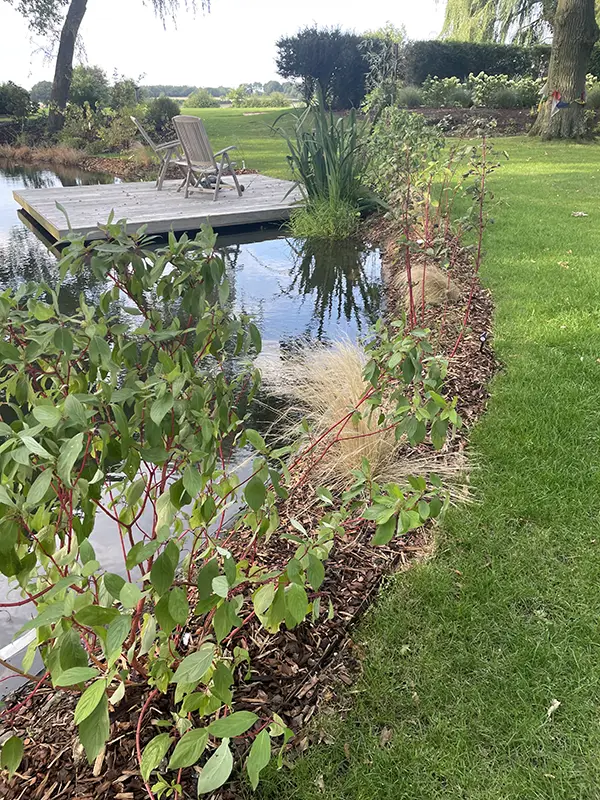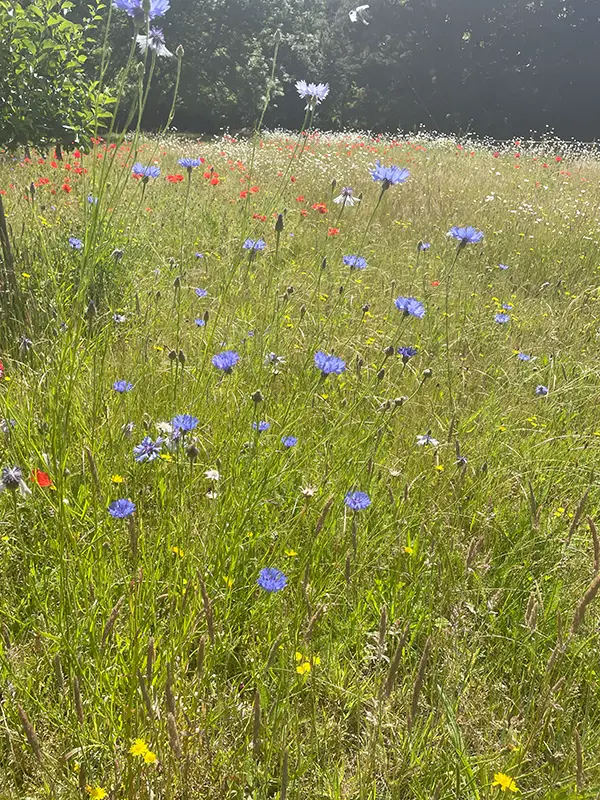Planting a wildflower meadow in your garden offers a wealth of benefits, both for you and the environment. Amy and her team are passionate about the beauty and environmental benefits of wildflower meadows.
Environmental benefits of wildflower meadows
- Biodiversity boost: Wildflower meadows are havens for pollinators like bees, butterflies, and other insects. They also provide habitat for birds and small mammals.
- Pollinator support: With declining pollinator populations, wildflower meadows provide crucial food sources (nectar and pollen) and nesting sites.
- Soil health improvement: Wildflowers often have deep root systems that help improve soil structure, aeration, and water retention.
- Reduced chemical use: Wildflower meadows typically require less maintenance than traditional lawns, reducing the need for fertilizers and pesticides.
- Carbon sequestration: Meadows, through their plant life, capture and store carbon from the atmosphere.
- Natural pest control: The diverse plant life in a meadow can attract beneficial insects that prey on garden pests.
Other benefits of wildflower meadows
- Natural beauty: Wildflower meadows offer a stunning display of colour and texture, creating a natural and relaxed aesthetic.
- Low maintenance: Once established, wildflower meadows require minimal maintenance, such as occasional mowing.
- Relaxing atmosphere: The natural beauty and buzzing activity of a wildflower meadow can create a peaceful and relaxing atmosphere.
- Educational opportunity: A wildflower meadow can be a great way to learn about native plants and wildlife.
- Seasonal interest: Wildflower meadows change throughout the year, offering a dynamic and ever-evolving display.
- Creates a unique garden: Instead of a standard lawn, a wildflower meadow will make your garden stand out.
- Cost-effective: Establishing a wildflower meadow can be more cost-effective than maintaining a traditional lawn.
- Adaptability: Wildflower meadows can be adapted to various soil types and garden sizes.
By planting a wildflower meadow, you’re not only creating a beautiful and low-maintenance garden but also contributing to the health of the environment.


